India aims for the Moon with launch of Chandrayaan 3
The ambitious mission comes as India signs the US-led Artemis Accords to shape future global lunar activities.
August 23 edit: The landing was successful!
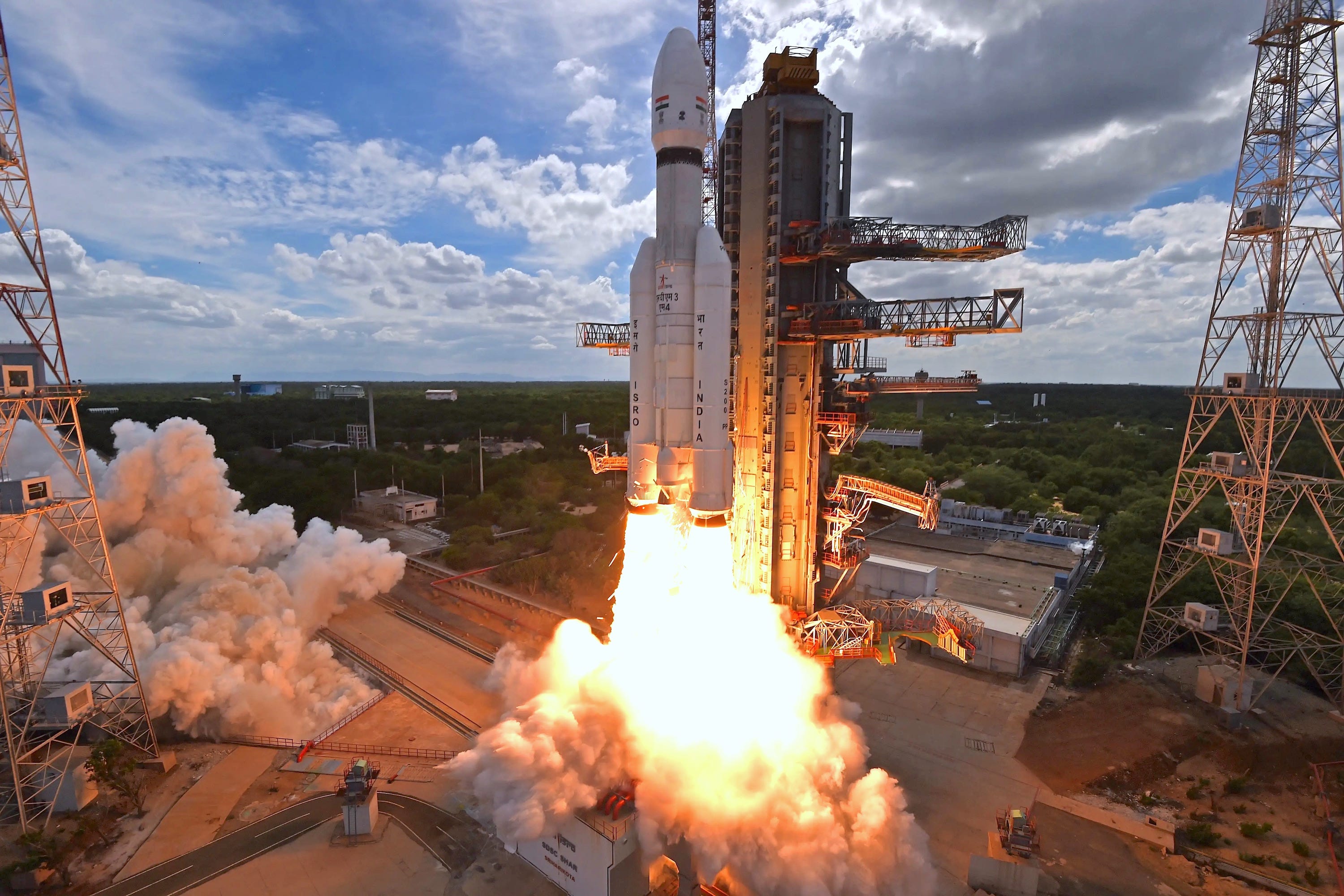
On July 14, Friday at 14:35 IST (09:05 UTC), the Indian Space Research Organization (ISRO) launched the robotic Chandrayaan 3 spacecraft for a second attempt to land on the Moon. This is India’s second such try, as the lander on the 2019 Chandrayaan 2 mission unfortunately crashed during its final descent phase. Chandrayaan 2 wasn’t a complete failure as India did deploy its second lunar orbiter, which continues to provide valuable data for lunar science as well as future exploration planning.
A leg up for sticking the lunar landing
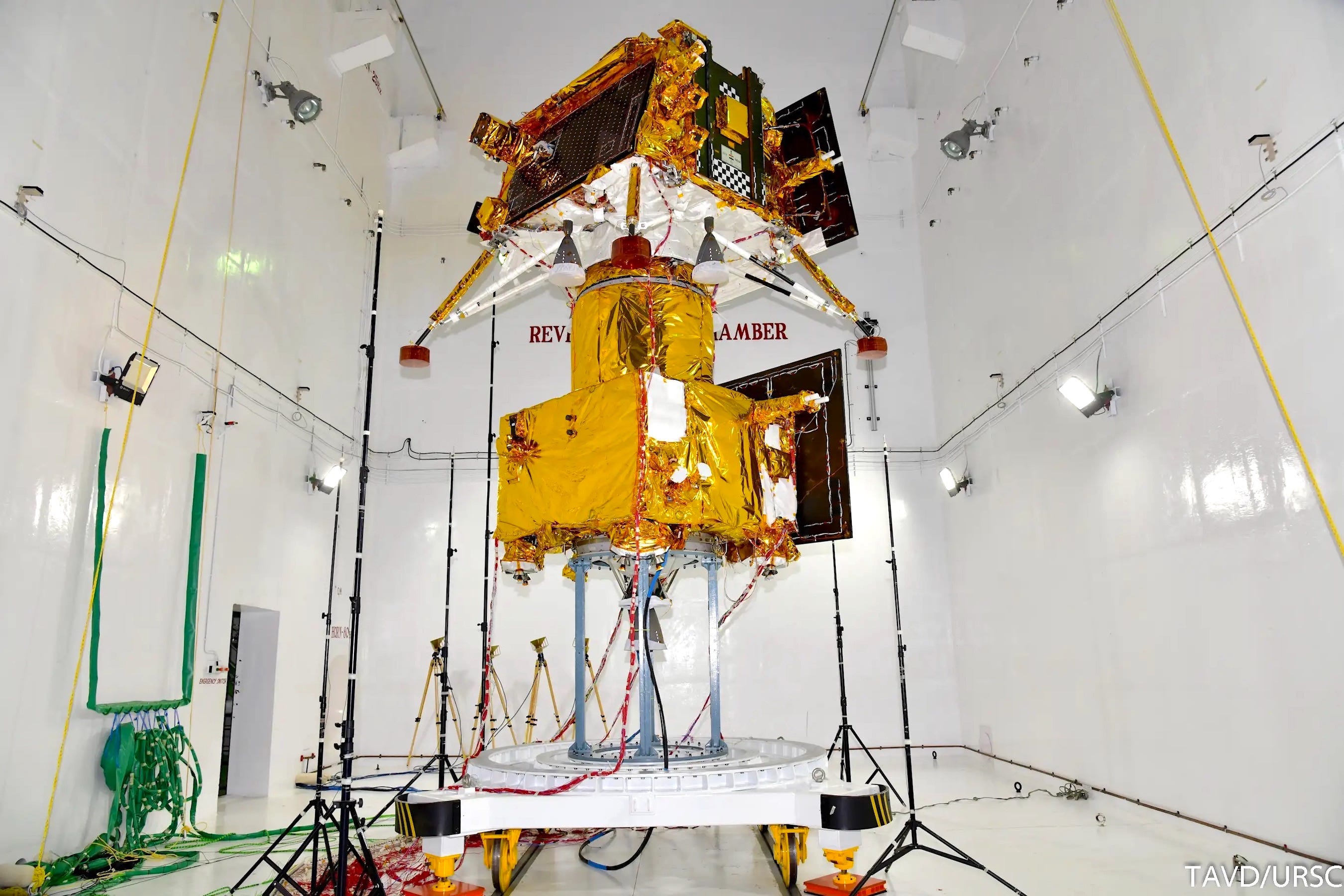
The 1752-kilogram Chandrayaan 3 lander, named Vikram after the father of the Indian space program Vikram Sarabhai, is 280 kilograms heavier than its predecessor. Not only does it carry more fuel to better stay on its intended trajectory to the lunar surface, ISRO has built into Vikram far more redundancies and safeguards to gracefully touchdown this time around. This includes several upgrades such as strengthened legs to absorb mechanical shocks of touchdown, a new velocity sensor for enhanced navigation measurements, and software improvements to accommodate sensor failures. Combined with numerous ground tests, ISRO has left no stone unturned to get India in history as the fourth country to achieve a lunar landing, following the USSR, the US, and China.
“Instead of a success-based design, ISRO has this time opted for a failure-based design,” said ISRO’s chairman S. Somanath during a July 6 press briefing. That is, for Chandrayaan-3, ISRO has focused on what can fail and how those failures can be prevented. “We looked at sensor failure, engine failure, algorithm failure, calculation failure,” Somanath said.
For launch, ISRO mated the lander to a 2148-kilogram orbiter. At 3,900 kilograms, the combined stack was just within the lift limit of their ride to space—the GSLV Mk III rocket that is also India’s most powerful. After being deployed to a highly elliptical Earth orbit of ~170 by 36,500 kilometers, the Chandrayaan 3 orbiter will propel Vikram to and around the Moon, and then maneuver it into a circular polar orbit of 100 kilometers above the lunar surface.
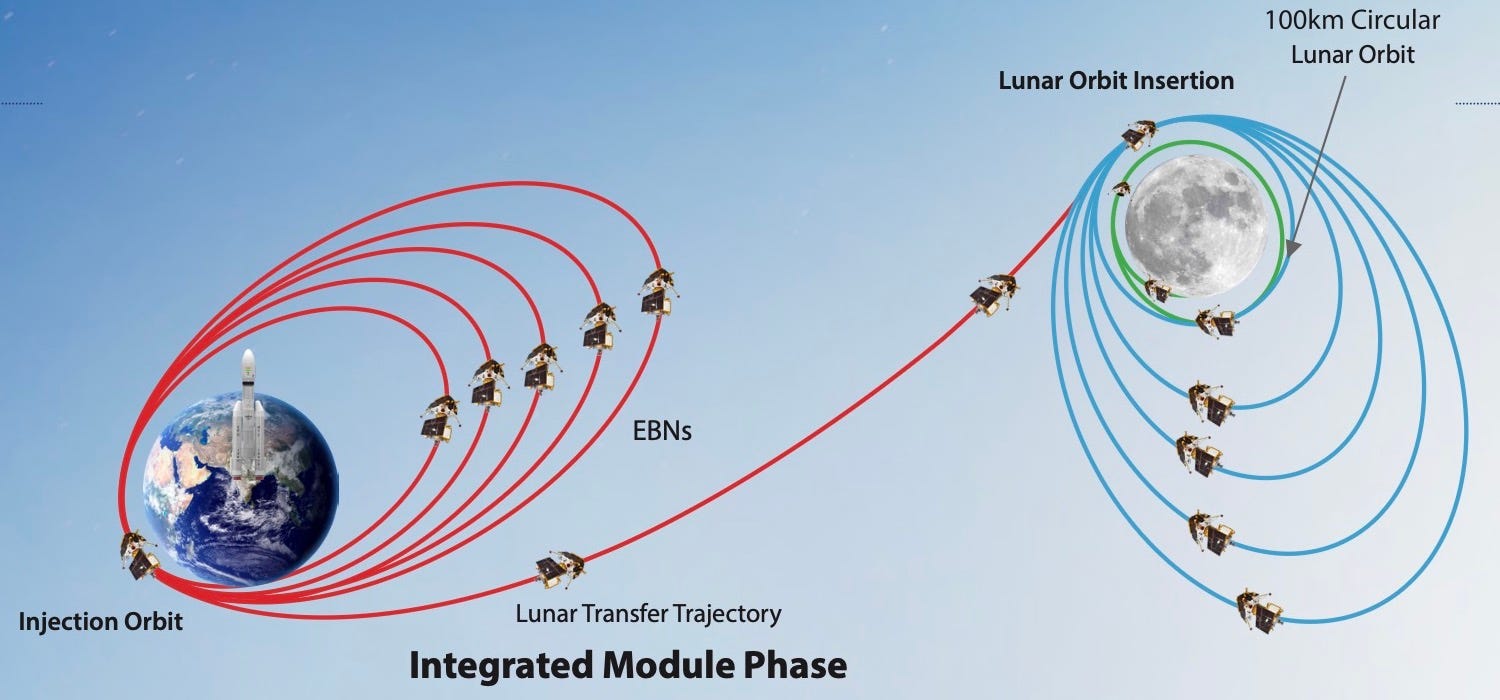
Vikram will then detach itself from the orbiter to close in on the Moon, and on August 23 begin an autonomous descent to the surface by orchestrating its four 800-newton engines and eight thrusters based on continuous distance, velocity, orientation, and imaging input from its sensors. If all goes to plan, the solar-powered lander will confirm its touchdown from the Moon.
A lunar region never explored
Located at the near-polar location of 69.37 S, 32.35 E, Chandrayaan 3’s target landing site is a geologically rich region embedded in a larger rocky highland. ISRO scientists and engineers chose it based on high-resolution photos and data from their Chandrayaan 2 orbiter as well as NASA’s Lunar Reconnaissance Orbiter.
“This is the first ever surface exploration of a high-latitude near-polar region, something that’s never [been] measured in-situ,” says Anil Bhardwaj, director of the Physical Research Laboratory in Ahmedabad, India, and a scientist involved in several of the nation’s planetary missions.
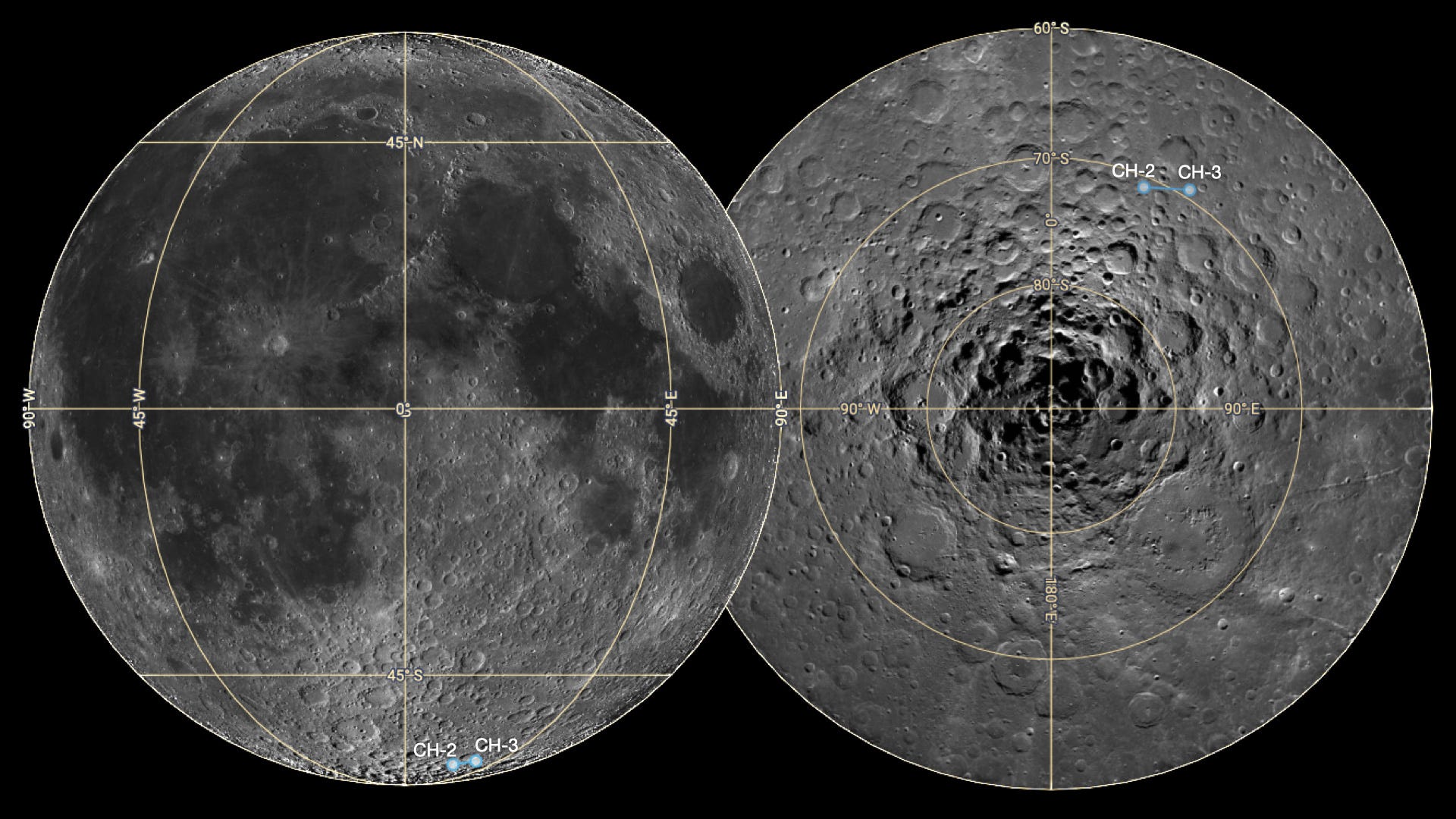
To begin Chandrayaan 3’s surface mission, Vikram will deploy a 26-kilogram rover called Pragyan via a ramp. The six-wheeled, solar-powered rover will communicate to and from Earth via the lander, as it explores the landing region for 14 Earth days—or one lunar day—with a traverse path optimized for engineering safety versus scientific return.
Pragyan carries two spectrometers to help scientists determine what elements and minerals make up the soil and rocks around the landing region. One of these is the APXS, a miniaturized, 0.7-kilogram X-ray spectrometer. APXS proved particularly challenging to realize, says its principal investigator Santosh Vadawale, an astrophysicist at PRL. “For APXS to work, it has to be within 5 centimeters of its target,” he explains. “It took multiple design iterations to make such a mass-constrained instrument deployable without a traditional robotic arm.” The instrument protrudes the rover’s front, and rotates by 90 degrees to study the material below it.
Procuring the radioactive Curium-244 source central to APXS wasn’t straightforward either. “It’s available only from Russia, even for NASA’s Mars rovers needing the same,” notes Vadawale. The instrument’s lead engineer M. Shanmugam adds, “The procurement started in 2010, and took about 7 years.”
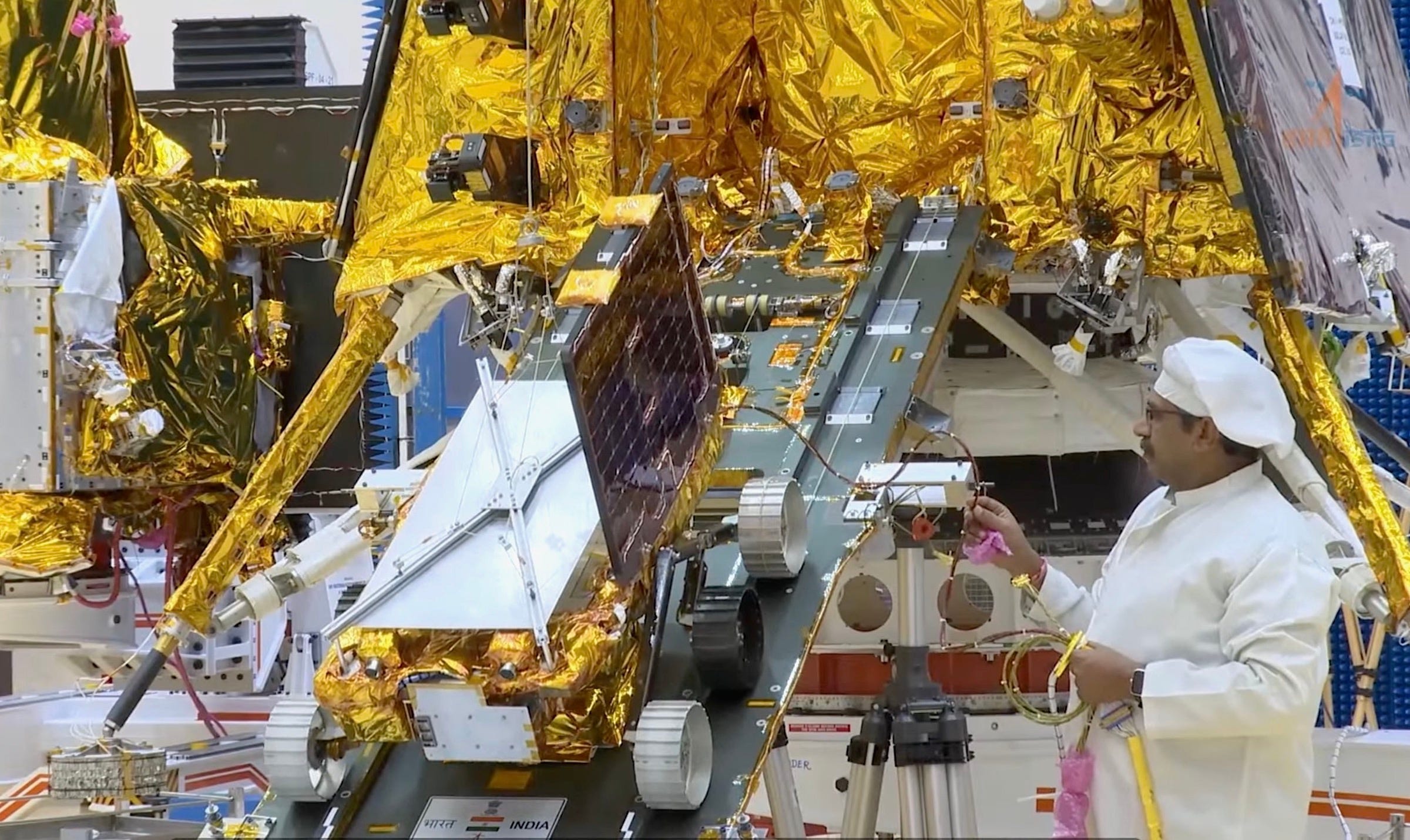
The Vikram lander itself hosts four science experiments. A seismometer will detect moonquakes to provide clues about the Moon’s internal structure, building on work that began with the deployment of similar instruments by NASA’s Apollo missions. A Langmuir probe and a radio occultation experiment will study for the first time near-surface lunar plasma created by incessantly streaming charged particles from the Sun. NASA is contributing a retroreflector, an upgraded version of the ones left on the Moon by Apollo missions, which scientists will bounce laser pulses off to better understand the gravitational nature of the Earth-Moon system as well as the lunar interior.
The lander will also insert a thermal probe to about 10 centimeters into the lunar soil and provide pristine soil temperature measurements throughout the lunar day. “This is the first ever in-situ thermal profiling of the Moon’s near subsurface. It will tell us exactly how the Sun’s heat propagates downwards from the surface,” says PRL planetary scientist K. Durga Prasad, one of the experiment leads. A heater just above the probe’s tip will warm up the soil to help scientists determine the latter’s thermal conductivity, and from it infer its density and physical properties—something critical for future advanced lunar exploration. “Temperatures dictate the presence, stability, and mobility of water on the Moon,” Durga adds. “The experiment will tell us about stability zones of such resources. Future studies and even extraction operations of lunar soil will benefit from this data.”
India’s role in the return to our Moon
Chandrayaan 3 feeds into the global frenzy of sending hardware to the Moon, particularly to its south pole. The upcoming US Artemis crewed missions, China’s Chang’e robotic craft, and the majority of other government as well as private endeavors plan to explore the Moon’s south pole. They eventually aim to extract its water ice and other resources to sustain lunar missions for long durations and commercialize aspects of such operations. However, getting to the lunar surface remains risky. Three out of the last four landing attempts—including Chandrayaan 2—have failed. India’s hopefully successful reattempt with Chandrayaan 3 will help keep the momentum for the Moon going.
“India giving the hard problem of Moon landing a second try soon after its first attempt is an appreciated investment the whole world will benefit from,” says Jessy Kate Schingler, a researcher in outer space policy and a senior advisor at the Open Lunar Foundation.
In fact, India’s investment in the Moon is growing. For the Chandrayaan program, ISRO developed its own lunar soil simulant facility to test a variety of hardware as the country prepares for more lunar activity. For its next Moon mission launching before the end of decade, India is partnering with Japan to have the LUPEX rover directly study water ice on the Moon’s south pole. “LUPEX will help us understand the distribution, nature as well as quantity of water ice accessible in the first few centimeters of the polar surface it explores,” Bhardwaj states.
It’s quite the timing then that on June 21 India signed the Artemis Accords, a US-led lunar governance framework aiming to peacefully manage lunar activity from the increasing number of global missions. Seeing that both Japan and India are signatories of the Accords, the mission will likely feed into the critical data on which future crewed Artemis missions will bank on.
“The Accords are a non-binding political understanding of a Signee for mutually beneficial space exploration activities based on the desire to implement provisions of the Outer Space Treaty with focus on the Artemis program. As a signatory, India could accelerate its lunar exploration program by better collaborating with the US and other signee nations,” said Ranjana Kaul of the law firm Dua Associates, who specializes in international space law and policy and is on the board of the International Institute of Space Law.

But there’s a catch. ISRO’s aspiring upcoming space science missions have been facing nothing but delays due to budget shortages and overshadowing priorities. While India’s new space policy, out in April, does encourage ISRO to “undertake missions on in-situ resource utilization and celestial prospecting”, failure to increase such science & technology outputs for real wouldn’t allow India to sufficiently leverage the Accords in helping shape our future at the Moon.
“The Accords could be a sign that India will invest much more in lunar and space exploration,” Schingler adds. “However, it’s the actual outcome that will at least partially determine the weight India can pull in space policy matters.”
One thing is clear. The success of ISRO’s Chandrayaan 3 Moon lander will be critical for anchoring India’s long-term role in lunar exploration and governance.
Originally published on Scientific American, and tweaked for my blog.
